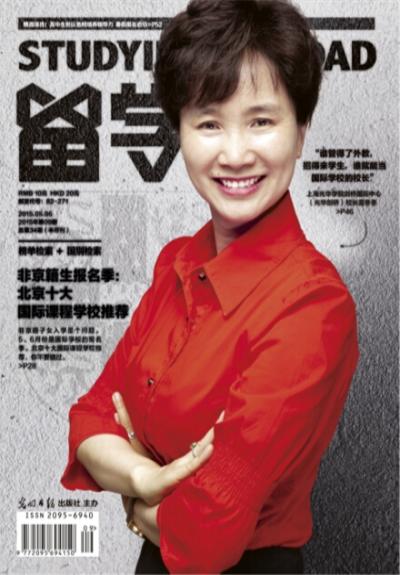《留学》编者按:由Timothy Sternberg和Francisco Bello拍摄的木心纪录片,4月23日于纽约Asia Society首映。
今天不谈西方,不论派系,不议主流,决定将目光缩小,再缩小,并投射于广袤的中国大地,只因我们偶尔会在某种情愫的作用下,择一琴,衔一觞,挥墨忘情于本土的山河秀美,低眉逡巡于深邃的国学语境。回溯当年,曾有一人,当他身背画架,手提书箱被动出走异乡时,定不会猜到日后被人拿出品评。其实,落笔谈及自己崇敬之人,内心总是忐忑的,性质不啻于惶惶然擎着措辞了一夜的情书给心仪的对象,盼着答复。删删打打,排列文字,促成此文。今天就让我们一同走进—木心与他的文化世界。
谁人木心?
木心(1924-2011),原名孙璞,乌镇人士。知名华侨文学家、画家,早年在台湾和纽约华人圈被视为中国传统文化的精英和传奇人物,其作品与文化精神后经由国内学者引介回国,受到了广泛地关注与好评。可以说,木心是中国近当代接受古典文人传统的最后一批学者,同时又因其常年旅居国外,将中国传统的文化精神与西方文化高度融合。他的情怀与经历形成了匠心独具的写作与创作规范。
Mu Xin (1927-2011) is the pen name of a renowned Chinese diasporan writer and artist. Born in Wuzhen, he was among the last generation to receive a classical education in the literati tradition, but he was also exposed through voluminous reading to the highest achievements of Western art and culture.
跨界艺术
木心于1947年进入到“上海美专”学习美术,之后师从林风眠,转入“杭州国立艺专”,继续习讨中西油画。“文革”期间的遭遇,让木心痛失其早间的大量创作文本。身心俱疲的他于1982年后,长居美国,潜心研学创作,并取得了大量的文化成果,包括诗歌、散文、小说等文学作品,以及被广泛收藏于西方美术馆的美术画作。经历塑琢、成就了大师,木心在文艺上所展现出来的精妙与其辗转的经历相关着、纠缠着并绕成了一条无形的线,悄然地将文学与美术连成串,织成网,牵住了千万读者与观者的心。这体现了一种契约精神,是木心在浸身中国传统、面立西方文化后默许的约?定。
From 1947 to 1949, MuXin attended Shanghai Institute of the Arts and then mentored by Lin Fengmian (林风眠), he moved to Hangzhou Institute of the Arts to study Chinese and Western painting. From 1949 until 1982, before moving to the United States, MuXin lived in China. . Although he wrote profusely in that period, all of his earlier manuscripts were confiscated and destroyed during the Cultural Revolution. Since 1982, MuXin has published twelve books of fiction, prose, and poetry (in Chinese) and has been contributing to literary columns in Chinese journals and newspapers outside the PRC. Among the Chinese diaspora, MuXin’s works have attracted an intense following. In addition to his literary accomplishments, MuXin is also a well-recognized artist whose paintings are preserved, among other places, at Yale University and Harvard University Art Galleries.
他的画、他的墨
木心从不吝啬表达自己对中国山水和水墨的喜爱,他认为中国的“人”和中国的“自然”,纠结着、参透着,“乐其乐亦宣泄于自然,忧其忧亦投诉于自然,不相干地相干着”。他的画作被视为向先师致敬、与前人对话。这将他的山水画作与10世纪的中国笔触紧密糅合在一起,寄情于画、藏怀于景。木心的画,承接古法、批判未来。
The work of Mu Xin , in part, a dialogue with the past masters of Chinese painting and, thus, with Chinese history in general. This dialogue is a key factor in connecting Mu Xin with the continuous tradition of Chinese landscape painting, begun in the 10th century, which is embedded with meanings both personal and profound. Emerging from his knowledge and interpretation of past masters, Mu Xin created paintings that responded to the past while criticizing the future.
谈及此,不妨讨论一个有趣的译介学问题。按照业界策展人比较普遍的用法会将水墨画译为“Chinese Ink Painting”;按图索骥至中英词典,你会看到“Ink Washing Painting”的字样。仔细读来怎么都觉得差些意思,就好比当年“沙发”被引入中文的时候若被译为“皮制或棉制的大椅子”亦或“巧克力”被译为“深棕色的糖”云云,便会真心觉得味道全无,不如直接音译来的干净利落。至此,水墨画,作为一种传统的艺术表达形式,是由墨、水、纸三者之间的”起承转合“加诸中国美术的发展轨迹另配有落笔人的三观、情怀等感性因素综糅而成的。再从材料上分析,所谓“墨”,指中国古代书写和绘画用到的墨锭,集炭黑、松烟、胶等原材料之大成,是碳元素以非晶质型态的存在并通过砚用水研磨至墨汁而成。而“Ink”一词仅突出了其中一味单一材料。至此,从材料构成到运用介质,加诸上文提到的应用理念上分析来看,Ink Painting与水墨画是最好不要相互译释的。不如也直译成“Shui Mo”好吗?自私地想,每每对外国友人说起”Shui Mo”,定会费一番口舌加以解释、阐述,那么其中的韵和神也就顺势而出了。
Keywords:
literati n. 文人
sinology n. 国学
pen name笔名
renowned adj. 著名的
profusely adv. 丰富地
fiction n. 小说
manuscript n. 手稿,原稿
accomplishment n. 成就
preserve v. 保存
landscape painting 风景画
be embedded with 嵌入,蕴含于...
interpretation n. 翻译
emerge from自...中出现
profound adj. 深厚的,渊博的
criticize v. 批判,评论
prestigious adj. 有声望的
dye n. 染料
pigment n. 颜料





 缩小
缩小 全文复制
全文复制